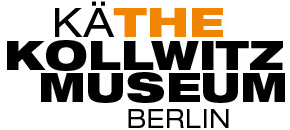
INTERVENTION in the permanent exhibition:
Kollwitz meets Colleagues
Before the museum can move into its final exhibition space on the first floor of the theatre building – thus creating space for temporary exhibitions – small, temporary special exhibitions will be integrated into the collection presentation in the “Intervention” format. Last year, the museum was able to show rare prints and unique drawings by Käthe Kollwitz from two private collections in three “Interventions”. This year, the museum is focussing on Käthe Kollwitz’ artist colleagues. In the first two interventions, works by the sculptor Wilhelm Loth (1920-1993) and works by the animal sculptor August Gaul (1869-1921) were shown. Now, in the third INTERVENTION, woodcuts by the painter and graphic artist Karl Schmidt-Rottluff (1884-1976) will follow.
Karl Schmidt-Rottluff is one of the outstanding representatives of German Expressionism and was a member of the artists’ association “Die Brücke” (The Bridge), which rebelled against the established representatives of the Berlin Secession. The First World War, in which the artist was forced to take part in Russia from 1915, led him to create a series of woodcuts with religious motifs in which he processed his war experiences. In a letter to his collector friend Ernst Beyersdorf, he wrote: “I am now under great pressure to create something as strong as possible – the war has really swept away everything from the past – everything seems dull to me (…)”
Ten woodcuts by the artist from the years 1914 – 1918 are juxtaposed with the cycle “War” by Käthe Kollwitz, which she also created using the woodcut technique. The outbreak of war and its consequences had a strong impact on both artists. An artistic confrontation was unavoidable, but both artists resisted the impulse to depict acts of war. Käthe Kollwitz was concerned with the effects of the war on the bereaved families. Schmidt-Rottluff’s portfolio does not follow any recognisable theme at all, but places light-hearted motifs next to thoughtful depictions. The sheets were created by Schmidt-Rottluff for an exhibition published by the gallery owner I. B. Neumann in 1919.
Käthe Kollwitz’ initial reticence towards the Expressionists had faded after the First World War, especially after she herself had taken up the woodcut technique. She noted in her diary on 31 March 1920: “First jury day. Kolbe, Mosson, Scheibe, Schmidt-Rottluff, Pechstein, Heckel. Very good line-up. Lots of interesting and good works. Mostly ultra-modern. But my eyes have got used to it, I can keep up with a lot of things I wouldn’t have understood before.”
In 1931, Schmidt-Rottluff became a member of the Prussian Academy of Arts, from which he was forced to resign in 1933 due to National Socialist art policy. His art was defamed as “degenerate” and his works were removed from German museums. Many of his works were shown at the 1937 Degenerate Art exhibition in Munich. In April 1941, he was expelled from the Reich Chamber of Fine Arts, which was tantamount to a professional ban. His Berlin studio and flat were destroyed by a bomb in autumn 1943.
The Käthe Kollwitz Museum is presenting Schmidt-Rottluff’s monochrome woodcuts for the first time as part of this exhibition intervention. We would like to thank the Bernd Schultz Foundation in Memory of Hans Pels-Leusden for this latest permanent loan. Bernd Schultz and museum director Dr Josephine Gabler are continuing the intention of our museum founder Hans Pels-Leusden to place the work of Käthe Kollwitz in relation to her contemporaries with this exhibition.
The INTERVENTION Karl Schmidt-Rottluff runs from October 19, 2024 to February 16, 2025.





